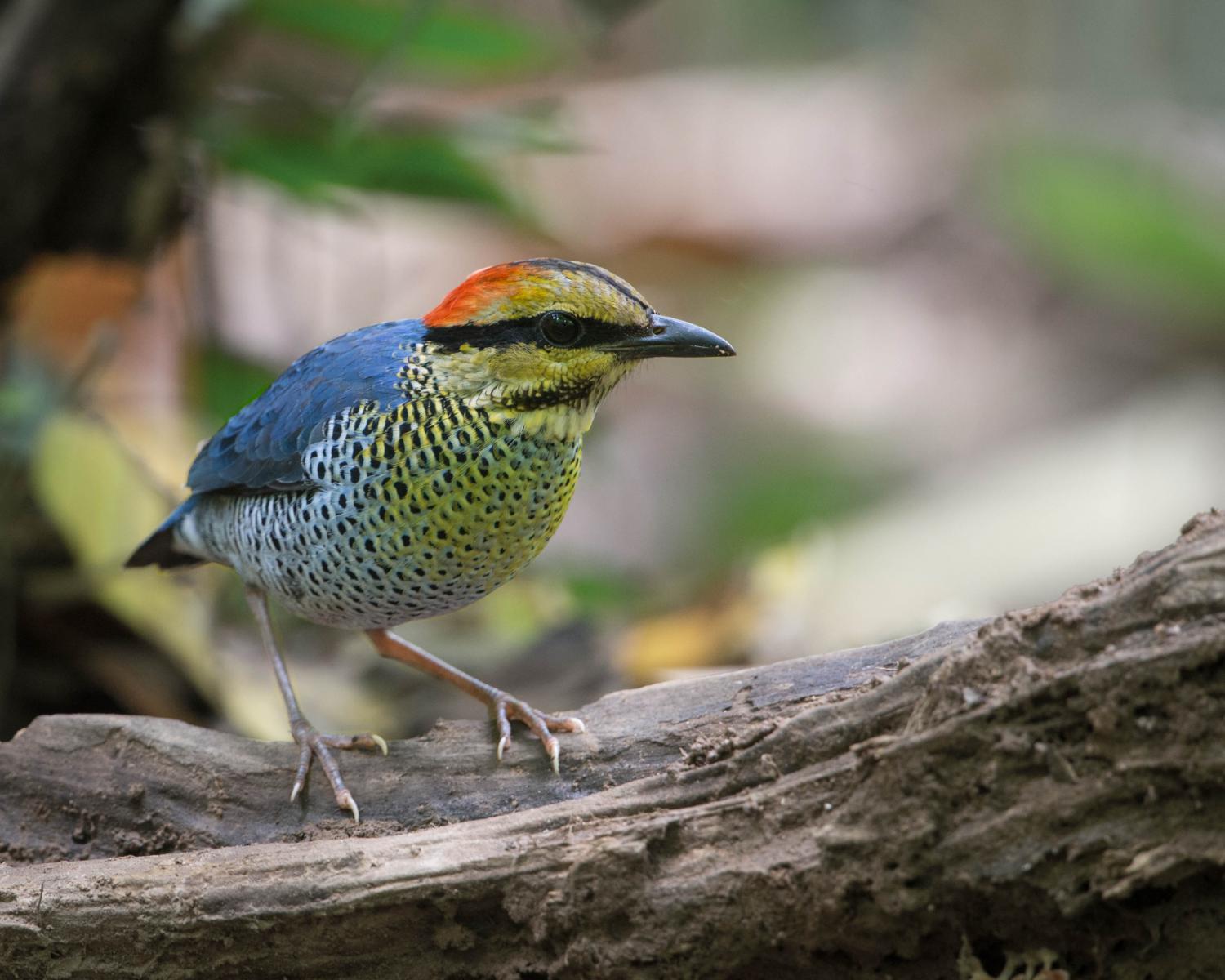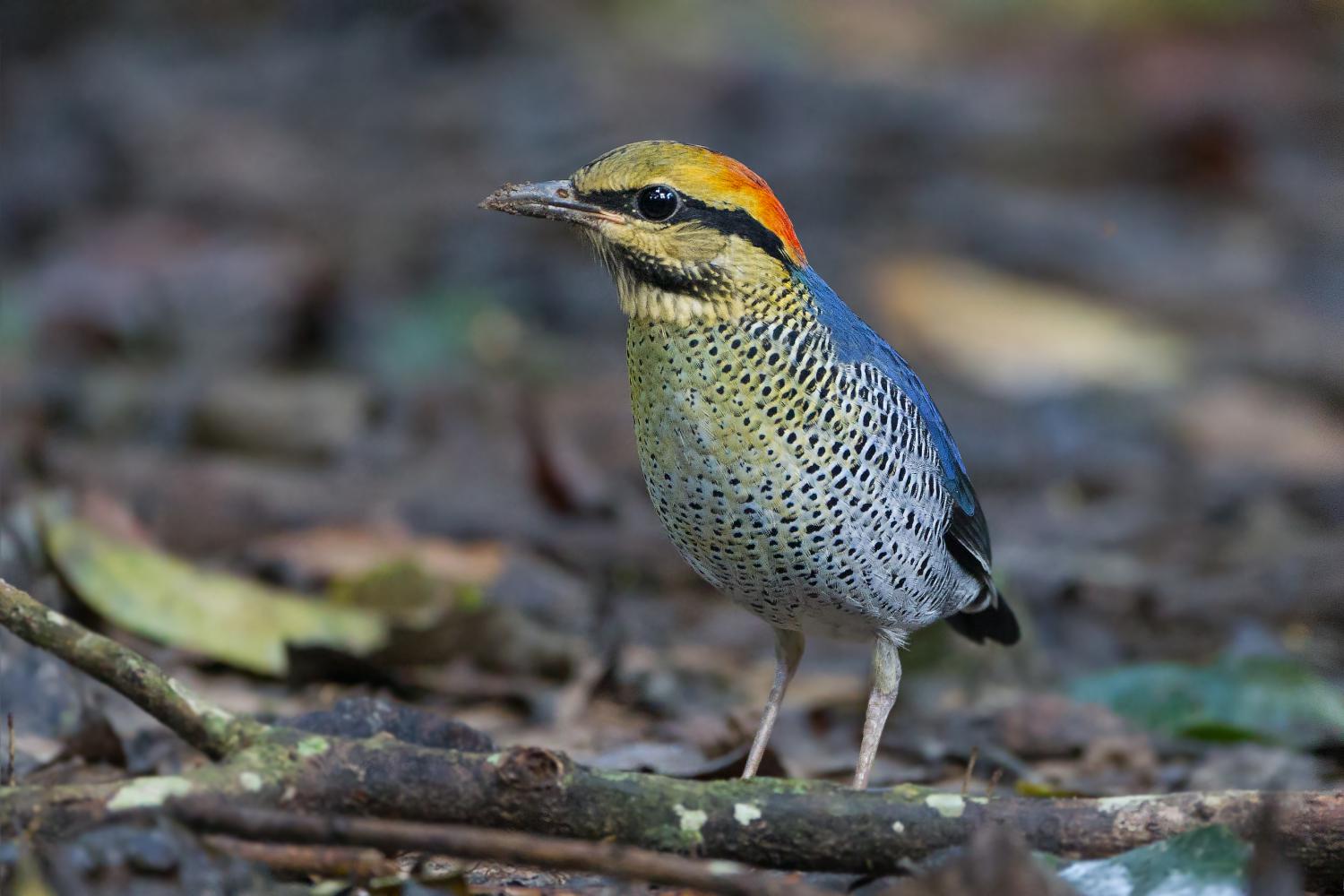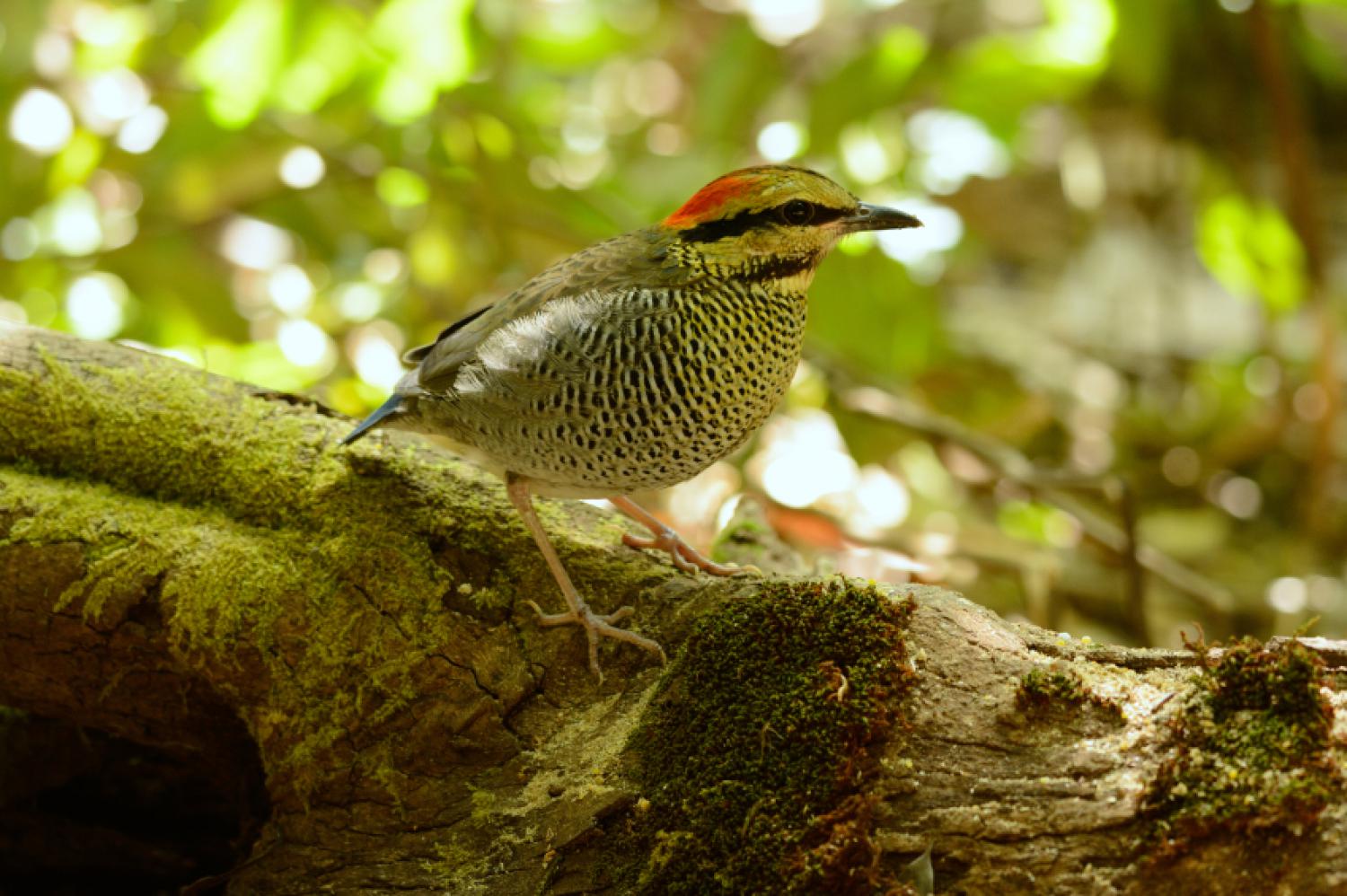Species of Thailand
Blue pitta
Hydrornis cyaneus
Edward Blyth, 1843
In Thai: นกแต้วแล้วสีน้ำเงิน
The blue pitta (Hydrornis cyaneus) is a species of bird in the family Pittidae found in the northeastern Indian subcontinent, southern China, and Indochina. It typically lives in moist forests but can also inhabit dry forest. It is an unobtrusive, solitary bird which feeds by foraging on the ground for insects and other small invertebrates.
Description
Pittas are medium-sized, stocky passerine birds with long legs and short tails. The blue pitta grows to a length of about 23 cm. It has a yellow forehead and crown and a bright orange nape. A bold black stripe passes through the eye and there is a less well-defined, short stripe on the chin. The male has a blue back and tail and a pale bluish breast, speckled with black. The female has a grey back and a pale grey breast, speckled with black. The bill is dark grey and the legs are pale pink. The call is a long, drawn-out "pleoow-whit" or "choocoo-whip", ending suddenly.
Distribution and habitat
There are three subspecies: H. c. cyaneus occurs in northeastern India and eastern Bangladesh, Myanmar, northern Laos, Vietnam, southern Thailand and southern China; H. c. aurantiacus occurs in eastern Thailand and southwestern Cambodia; H. c. willoughbyi occurs in central Laos and southern Vietnam. The bird's altitudinal range is from sea level up to about 2000 m -2. It is a forest bird, typical habitat being lowland and montane moist evergreen forest with bamboos, often near streams and in ravines, but it also occurs in drier tropical forests.
Ecology
Like other members of their genus, blue pittas are shy, secretive birds and usually occur singly, even juveniles foraging alone except when being visited by their parents; they will however respond to recordings of their call. They are diurnal, which enables them to see their often cryptic prey, but they often forage in darker areas of the forest. They search through plant litter on the forest floor for insects (especially beetles) and their larvae, spiders, snails, worms and grubs, flicking away leaves and probing the ground with their beaks. Breeding takes place in May and June in India and Myanmar, and between June and October in Thailand. The nest is a large, bulky dome-shaped structure with a side entrance, hidden amongst tangled plant growth.
Status
The blue pitta has a very wide range and although scarce in India and China, is common in suitable habitat over much of its range, being particularly abundant on the Bolaven Plateau in Laos. It is present in some protected areas, and the International Union for Conservation of Nature has assessed its conservation status as being of "least concern".
This article uses material from Wikipedia released under the Creative Commons Attribution-Share-Alike Licence 3.0. Eventual photos shown in this page may or may not be from Wikipedia, please see the license details for photos in photo by-lines.
Category / Seasonal Status
BCST Category: Recorded in an apparently wild state within the last 50 years
BCST Seasonal status: Resident or presumed resident
Scientific classification
- Kingdom
- Animalia
- Phylum
- Chordata
- Class
- Aves
- Order
- Passeriformes
- Family
- Pittidae
- Genus
- Hydrornis
- Species
- Hydrornis cyaneus
Common names
- Thai: นกแต้วแล้วสีน้ำเงิน
Subspecies
Pitta cyanea aurantiaca, Jean Théodore Delacour & Pierre Jabouille, 1928
Range: Cambodia and S/E Thailand
Pitta cyanea cyanea, Edward Blyth, 1843
Range: East Bangladesh, N/E India, South China, Myanmar, Thailand, Indochina
Pitta cyanea willoughbyi, Jean Théodore Delacour, 1926
Range: Central Laos, Vietnam
Synonyms
- Hydrornis cyaneus, Edward Blyth (1843)
Conservation status

Least Concern (IUCN3.1)
Photos
Please help us review the bird photos if wrong ones are used. We can be reached via our contact us page.
Range Map

- Chaloem Phrakiat Thai Prachan National Park
- Chiang Dao Wildlife Sanctuary
- Doi Inthanon National Park
- Doi Khun Tan National Park
- Doi Pha Hom Pok National Park
- Doi Phu Kha National Park
- Huai Kha Khaeng Wildlife Sanctuary
- Kaeng Krachan District, Phetchaburi
- Kaeng Krachan National Park
- Khao Chamao - Khao Wong National Park
- Khao Khitchakut National Park
- Khao Soi Dao Wildlife Sanctuary
- Khao Yai National Park
- Khon San District, Chaiyaphum
- Khun Chae National Park
- Kui Buri National Park
- Mae Wong National Park
- Mueang Nakhon Nayok District, Nakhon Nayok
- Nam Nao National Park
- Pang Sida National Park
- Phu Hin Rong Kla National Park
- Phu Khiao Wildlife Sanctuary
- Phu Luang Wildlife Sanctuary
- Sangkhla Buri District, Kanchanaburi
- Taksin Maharat National Park
- Tat Mok National Park
- Tha Yang District, Phetchaburi
- Thung Yai Naresuan Wildlife Sanctuary



